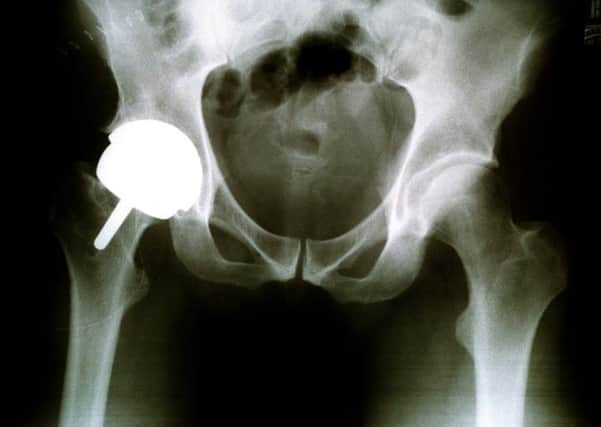‘No evidence of safety’ for one in 12 hip implants


Researchers from Oxford University trawled data relating to England and Wales and found eight per cent of devices used on patients were not backed by information proving they were safe.
Of all the hip implants potentially available to surgeons to use, 24 per cent were not backed by evidence of safety or effectiveness.
Advertisement
Hide AdAdvertisement
Hide AdThe team warned that the system for regulating hip implants “seems to be entirely inadequate”, almost two years after a scandal triggered a major alert being issued to the NHS.
In February last year, the Medicines and Healthcare products Regulatory Agency (MHRA) announced almost 50,000 patients with metal-on-metal hip replacements would need annual checks – including blood tests – over concerns they could cause serious health problems.
Those devices were linked to muscle and bone damage and neurological issues. Tiny metal ions made up of cobalt and chromium were thought to break off from the implants and leak into the blood.
Taxpayers face a huge bill for the cost of extra treatment for patients fitted with faulty devices, with the most problems linked to implants made by manufacturer DePuy.
Advertisement
Hide AdAdvertisement
Hide AdToday’s research, published in the British Medical Journal (BMJ), involved a review of all hip implants used in surgery in 2011, taken from the National Joint Registry for England and Wales.
The team concluded eight per cent of primary hip replacement devices implanted in 2011 had “no readily available evidence relating to their safety or effectiveness”.
“This is likely to be an underestimation of the true problem, as much of the evidence that does exist for the other unrated prostheses is of low quality or relates to short-term outcomes only,” they added.
“This is of great concern, particularly in light of the widespread publicity surrounding recent safety problems with regard to some resurfacing and other large diameter metal-on-metal joint replacements.”
Advertisement
Hide AdAdvertisement
Hide AdThe researchers said both professional and public confidence in the system was currently “at a low point”.
Their review found that 10,617 devices without available evidence of clinical effectiveness to support their use were implanted into patients in 2011.
Manufacturers are requested, but not required, to submit data on their product to the Orthopaedic Data Evaluation Panel, which rates implants according to levels of evidence.
In an accompanying editorial, researchers at Harvard Medical School argue that “the ability of manufacturers to promote devices or drugs that are authorised by regulators for widespread use but that do not have rigorous pre-approval data should be restricted”.
Advertisement
Hide AdAdvertisement
Hide AdThey said surgeons “should also ensure that their patients know about the benefits and risks of the new – but often unproved – medical devices that they are receiving.”
An MHRA spokesman said: “The majority of patients who receive hip implants have well-functioning hips and are at a low risk of developing any serious problems.
“The European regulatory system for medical devices such as hip implants is currently being revised and the MHRA has argued that there needs to be more stringent audits and clearer requirements relating to the consideration of clinical evidence.
“We also want information on the performance of devices to be more transparent and freely available.”
Advertisement
Hide AdAdvertisement
Hide AdThe agency said a new system was being set up to promote the availability of clinical data to strengthen evidence over the use of new implants.
“This should decrease the complication and the revision rates that may be associated with newly introduced hip implants, resulting in better patient care, better patient quality of life and decreased costs to the health services,” the spokesman added.
The agency said it was the first regulatory body in the world to issue advice to clinicians about metal-on-metal implants in April 2010.